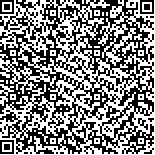| 摘要: |
| 大数据、人工智能、移动网络、云
计算等新技术的发展,正在引发一场全球新
一轮的技术革命。智能技术的发展不仅成
为国家经济、社会发展的创新动力,而且也
对城市的运作和发展产生了深刻的影响。智
慧城市在这样的大背景下,正以比我们想象
得更快的速度在城市的各个领域展开,如智
慧交通、智慧能源、智能通讯、智慧政务、智
慧医疗等等几乎涉及了城市运作的各个层面
和各个方面,这些智慧技术的应用已经对城
市生活产生了巨大影响,那么它将对未来城
市空间格局产生什么影响,对城市设计带来
怎么样的机遇和挑战,或者反过来说,我们
可以利用智慧技术在城市设计领域做些什
么,值得我们进一步思考。本文将通过对国
内外智慧城市研究领域前沿研究的分析,揭
示智慧城市技术对城市各个方面产生的影响
和潜在机遇,并提出未来城市设计利用智慧
技术将面临的新的课题和值得关注的研究
方向。 |
| 关键词: 智慧城市 城市设计 空间格局 资源配置 |
| DOI:10.13791/j.cnki.hsfwest.20190101 |
| 分类号: |
| 基金项目:国家重点研发计划(2016YFC0700200);
国家自然科学基金资助项目(51578383) |
|
| The Influence of Smart City Technology on the Development of Urban Space in the Future |
|
SUN Tongyu
|
| Abstract: |
| The development of big data, artificial intelligence, mobile network,
cloud computing and other new technologies is triggering a new round of
technological revolution in the world. The development of intelligent technology
has not only become the innovative driving force of national economic and social
development, but also has a profound impact on the operation and development of
cities. In this context, smart cities are developing in all areas of the city at a faster
rate than we thought. For example, smart transportation, smart energy, smart
communication, smart governance, smart medical and so on involve almost all
aspects of urban operation. The application of these intelligent technologies has
had a great impact on urban life. So, what impact will it have on the future urban
spatial pattern, what opportunities and challenges will it bring to urban design, or,
on the other hand, what we can do in the fi eld of urban design by using intelligent
technology, which is worthy of our further consideration.
Because the concept of smart city has various statements in various contexts,
there is no precise definition. This paper analyzes the frontier research in the
fi eld of smart city broadly across the world, and combs the relevant definitions
of smart city in the existing research literature, in which the six dimensions
proposed by Rudolf Giffinger who is the professor of Technical University
of Viennaare widely recognized by the academic community, namely: smart
economy, smart governance, smart environment, smart people, smart mobility,
smart living. These six dimensions also lay the basic framework for smart
cities.
Through extensive interdisciplinary literature review, this paper expounds
the relevant components of smart city technology and its research progress.
Generally speaking, there are many researches on all aspects of the components
of smart citie, but relatively scattered and regardless of size. It is mainly based
on the overall concept, system framework and technical means, and there is
little discussion on the relationship between smart city technology and urban
space form. This paper then points out the current research tendency of smart
sustainable city from a large number of literature, and illustrates it with four cases
of smart city new projects. On this basis, this paper reveals the influence and
potential opportunities of smart city technology on all aspects of the city, and puts
forward the new topics and research directions that will be faced by urban design
in the context of utilization of intelligent technology in the future. |
| Key words: Smart City Urban Design Urban Pattern Resource allocation |


